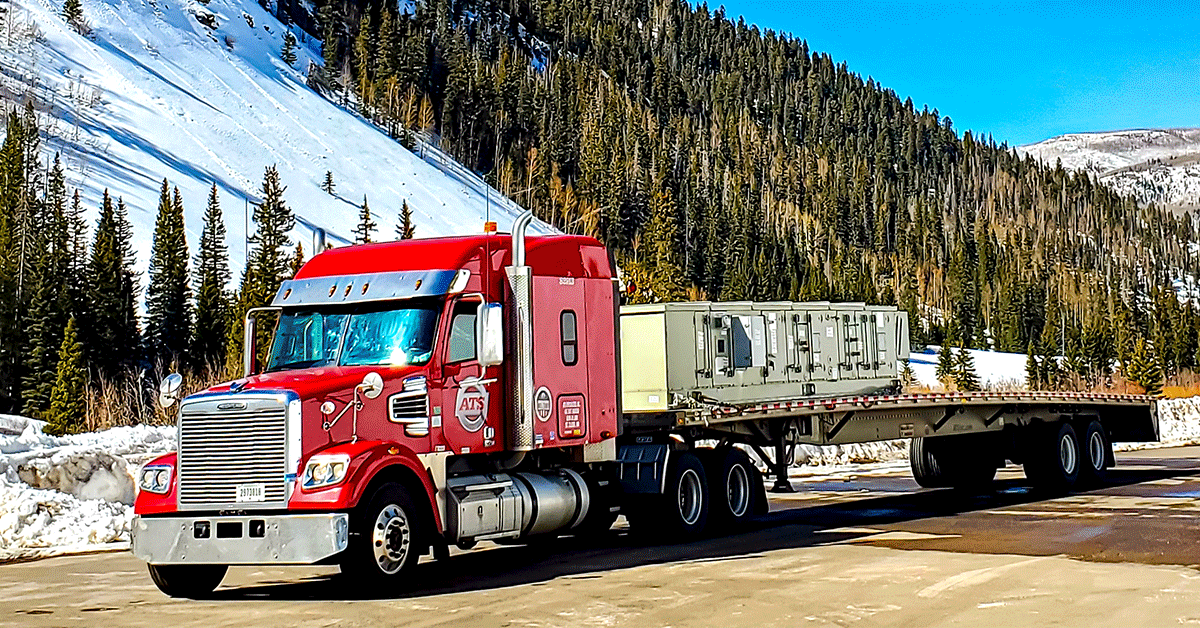
A layover in trucking is when a driver stops driving and waits for the next load assignment. This can happen due to driving hour restrictions or load availability.
In the trucking industry, a layover refers to the period when a truck driver halts their journey and waits for the next load assignment. This pause can occur because the driver has reached the maximum daily driving hours permitted by law or is waiting for a new load to become available.
During a layover, drivers may receive layover pay from their company as compensation for the time spent waiting. Understanding the concept of layovers is crucial for both truck drivers and trucking companies to efficiently manage schedules and ensure timely deliveries.

Credit: www.smarthop.com
Navigate As You Want: [show]
What Is A Layover In Trucking
Definition of a Layover in Trucking: A layover in trucking happens when a truck driver stops driving and must wait for a particular time before continuing their trip. This may occur due to reaching the maximum legal driving hours or waiting for a new load to be available.
Common Reasons for Layovers in Trucking: Layovers can result from various factors such as waiting for a load, reaching hourly limits, or changes in delivery/pickup schedules.
Effects of Layovers on Truck Drivers: Truck drivers may experience loss of potential income, disruption of their planned route, and potential delays in subsequent deliveries.
Layover Pay In Trucking
A layover in trucking refers to when a truck driver stops driving and must wait for a certain amount of time before continuing their trip. This can happen for various reasons such as reaching the maximum number of driving hours or waiting for a new load assignment.
During a layover, the driver receives layover pay.
| Layover Pay in Trucking |
| Explanation of Layover Pay: |
| Layover pay compensates truck drivers for time spent waiting for a new load assignment. |
| How Layover Pay is Calculated: |
| It is typically calculated based on the hours spent waiting rather than miles driven. |
| Differences Between Layover Pay and Detention Pay: |
| Detention pay is for waiting for the next available slot, while layover pay is for extended waiting periods. |
Length And Duration Of Layovers
In trucking, a layover refers to when a driver stops driving and waits for a certain period before continuing their trip. This wait could happen for various reasons, such as reaching the maximum hours allowed to drive in a day or waiting for a new load assignment.
Layover pay compensates drivers during these waiting periods.
| Typical Length of Layovers in Trucking: | Varies depending on factors like load availability and driver hours. |
| Factors Affecting the Duration of Layovers: | Driver’s schedule, shipment delays, rest requirements, and traffic conditions. |
Managing Layovers In Trucking
Trucking layover refers to a driver stopping and waiting before continuing. These layovers happen due to driving hour restrictions or load availability. Drivers receive layover pay for awaiting load assignment. The layover fee compensates extended stops, unlike detention pay for wait times for the next slots or changed delivery/pickup appointments.
Impacts Of Layovers In Trucking
A trucking layover refers to when a truck driver stops driving and must wait for a certain amount of time before continuing their trip. This scenario may occur for various reasons, such as reaching the maximum number of hours a driver is legally allowed to drive in a day or waiting for a load to be available. Layover pay is the pay a truck driver receives while they’re waiting on a new load assignment. For example, if you deliver a load on Friday, it can be a weekend before a new load is ready to be transported. During this time, drivers are unable to earn money for driving and may experience financial setbacks. It’s important for trucking companies to establish fair layover pay policies to compensate drivers for their time and prevent financial strain.
Layovers can also have a significant impact on the physical and mental well-being of truck drivers. Extended periods of inactivity and waiting can lead to decreased physical fitness, as drivers may have limited access to exercise facilities or healthy food options. Additionally, the isolation and prolonged time away from family and friends can take a toll on their mental health. Trucking companies should implement measures to support the well-being of drivers during layovers, such as providing access to fitness facilities and promoting mental health resources.
Furthermore, layovers can disrupt delivery schedules and affect customer satisfaction. If a truck driver experiences a prolonged layover, it can result in missed delivery deadlines and unhappy customers. Delayed deliveries can lead to penalties, loss of future business, and damage to the reputation of the trucking company. Therefore, it is crucial for trucking companies to effectively manage layovers, minimize their impact on delivery schedules, and maintain high levels of customer satisfaction.

Credit: www.cloudtrucks.com

Credit: www.atsinc.com
Frequently Asked Questions On What Is A Layover In Trucking
What Is An Example Of A Layover In Trucking?
In trucking, a layover is when a driver stops driving and waits for a new load assignment.
How Much Is A Layover Fee In Trucking?
A layover fee in trucking is a payment to drivers for extended breaks between loads.
How Long Is A Layover In Trucking?
A trucking layover is when a driver stops driving and waits for a specific time to continue, often due to legal limits or load availability.
What Is Layover In Freight?
A layover in trucking refers to when a driver stops driving and waits for a certain amount of time before continuing their trip. This can happen due to regulations on driving hours or waiting for the next load assignment. It is different from detention pay, which is when a driver waits for the next available slot.
Layover pay is the compensation a driver receives during this waiting period.
Conclusion
In the trucking industry, layovers refer to the time when a driver stops driving and waits for a new load assignment. They may occur due to legal driving hour limits or waiting for a new load. During this time, drivers receive layover pay, compensating for lost opportunities.
Understanding layovers is crucial for both drivers and companies.





